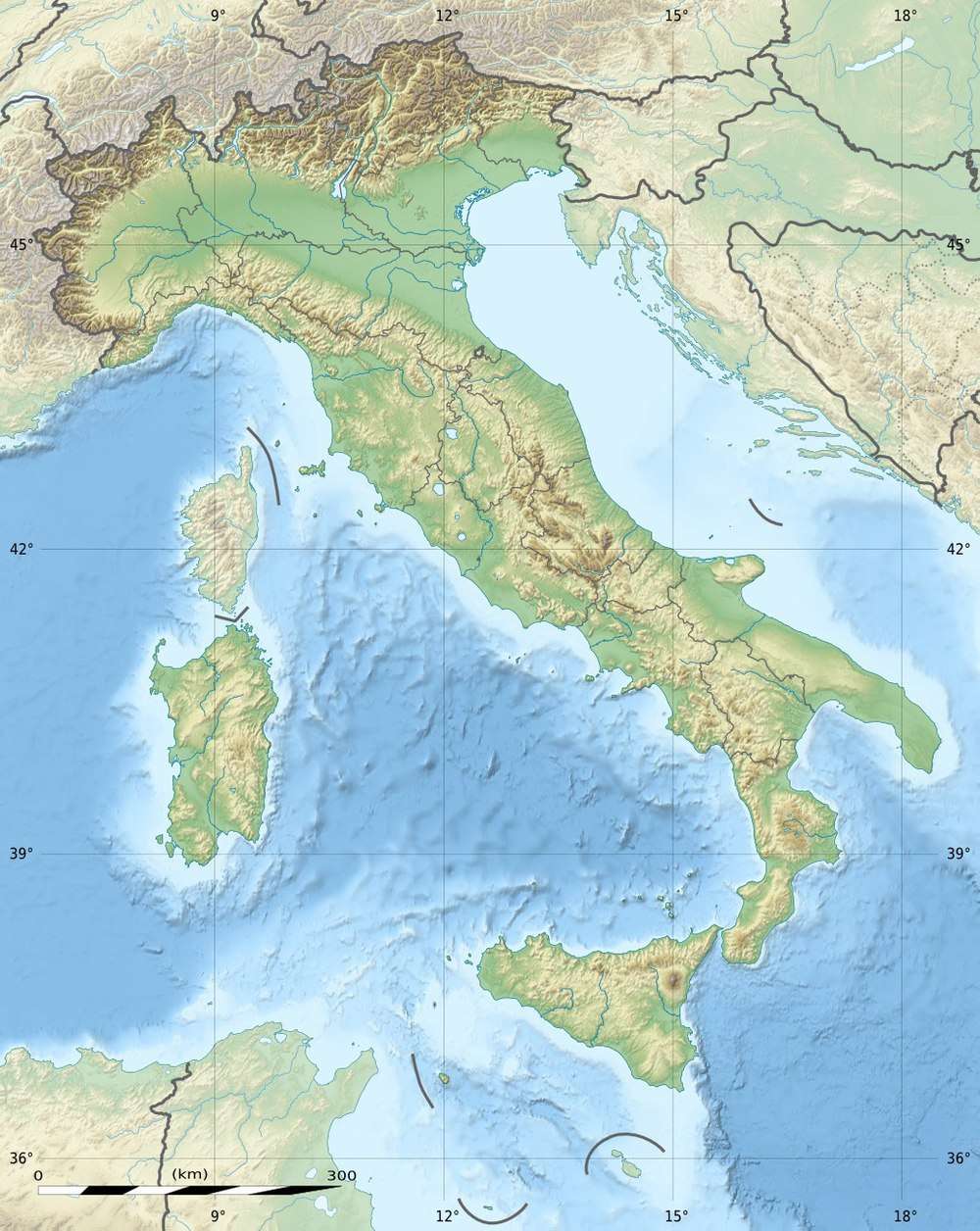2017 Ischia earthquake
The 2017 Ischia earthquake occurred in the island of Ischia, Campania, in southern Italy. The main shock occurred at 20:57 CEST (18:57 UTC) on 21 August 2017, and was rated 3.9 on the Moment magnitude scale.[6]
  | |
| UTC time | 2017-08-21 18:57:51 |
|---|---|
| ISC event | 611834681 |
| USGS-ANSS | ComCat |
| Local date | 21 August 2017 |
| Local time | 20:57 CEST |
| Magnitude | 3.9 Mw |
| Depth | 2.0 km (1.2 mi) |
| Areas affected | Ischia, Campania |
| Max. intensity | V (Moderate)[1] and VI (Strong)[2] |
| Casualties | 2 deaths[3] 42 injured[4] 2,600 homeless[5] |
Despite of the moderate magnitude, several buildings and a church collapsed. One woman died in Casamicciola Terme, after being hit by rubble that fell from a church.[7] Another woman died when her house collapsed.[8]
Damage and debates
The collapse of several buildings and the death of two women created much controversy and debate in Italy, because many geologists stated that with a moderate magnitude quake, modern buildings should not collapse.[9]
Moreover, Ischia is a zone with a high number of irregular buildings, and many critics considered the poor construction materials as the main cause for the death of the two women and for the damage.[10][11]
The sharp increase of the population between 1950s and 1980s and the growing inflow of tourists increased the anthropic pressure on the island. Significant acreage of land previously used for agriculture has been developed for the construction of houses or residential buildings. Most of this development took place without any planning and building permits. Many houses and structures across the island sustained moderate to severe damage when the earthquake hit.[12]
References
- M 4.2 - 4km N of Ischia, Italy
- Hai sentito il terremoto
- Terremoto a Ischia, due morti e 39 feriti. Corsa per salvare l’ultimo fratellino rimasto sepolto
- Forte terremoto a Ischia, crolli a Casamicciola. Due morti e almeno 39 feriti
- Ischia, 2.600 sfollati. La Protezione civile: "Niente tendopoli"
- "Terremoto 1 km SW Casamicciola Terme (NA), Magnitudo Mw 3.9, 21 agosto 2017 ore 20:57:51 (Fuso Orario Italia) » INGV Centro Nazionale Terremoti".
- Terremoto a Ischia, crolli a Casamicciola. Morta una donna, ci sono feriti e dispersi. Evacuato ospedale
- Terremoto a Ischia, due vittime. Crolla abitazione, famiglia imprigionata: in salvo padre e figlio di 7 mesi. Almeno 36 feriti
- Terremoto a Ischia, i geologi: «Case abusive o fatiscenti, allucinante morire per scosse di questa entità» I sindaci: «Nessun legame fra crolli e abusivismo»
- Terremoto Ischia, cemento e inchieste sull’isola dove non esiste l’abusivismo di necessità. È solo speculazione
- Magnitudo bassa, abusivismo alto: basta una scossa per mettere in crisi un'isola
- Ischia, il terremoto o gli edifici: cosa c’è davvero dietro i crolli? Il magistrato: «Troppe case abusive»
Further reading
- Braun, T.; Famiani, D.; Cesca, S. (2018), "Seismological Constraints on the Source Mechanism of the Damaging Seismic Event of 21 August 2017 on Ischia Island (Southern Italy)", Seismological Research Letters, 89 (5): 1741–1749, doi:10.1785/0220170274
- d'Auria, L.; Giudicepietro, F.; Tramelli, A.; Ricciolino, P.; Bascio, D. L.; Orazi, M.; Martini, M.; Peluso, R.; Scarpato, G.; Esposito, A. (2018), "The Seismicity of Ischia Island", Seismological Research Letters, 89 (5): 1750–1760, doi:10.1785/0220180084
- Nappi, R.; Alessio, G.; Gaudiosi, G.; Nave, R.; Marotta, E.; Siniscalchi, V.; Civico, R.; Pizzimenti, L.; Peluso, R.; Belviso, .; Porfido, S. (2018), "The 21 August 2017 Md 4.0 Casamicciola Earthquake: First Evidence of Coseismic Normal Surface Faulting at the Ischia Volcanic Island", Seismological Research Letters, 89 (4): 1323–1334, doi:10.1785/0220180063CS1 maint: numeric names: authors list (link)
External links
- The International Seismological Centre has a bibliography and/or authoritative data for this event.